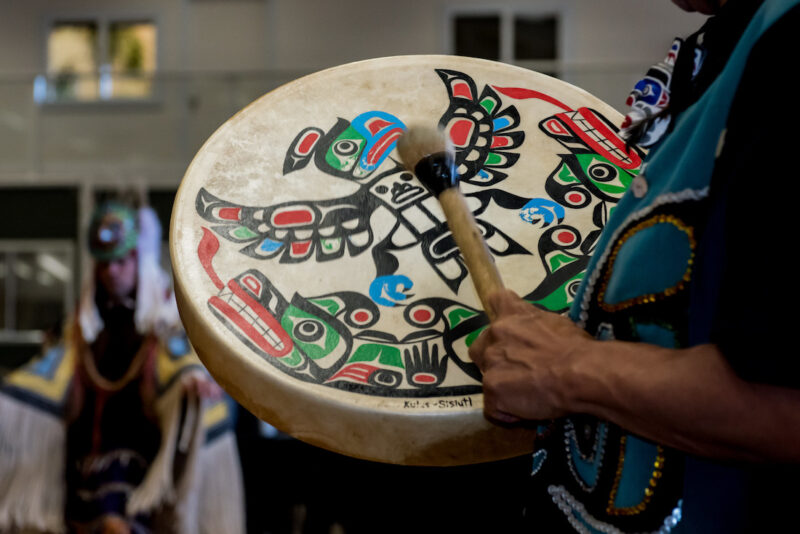Ancient First Nations tongues support aquaculture science
The ancient tongues of many BC First Nations support scientific conclusions that state wild salmon returns vary on cycles and have nothing to do with aquaculture or salmon farms.
Commentary
By Fabian Dawson
SeaWestNews
Some First Nations leaders, influenced by activists, are claiming that the waters in their traditional territories were always full of salmon before the advent of ocean-based net pens in British Columbia.
That is simply not true.
Firstly because there have been record runs of salmon in traditional territories since fish farming began some 35 years ago in the Western seas of Canada.
More importantly, the ancient tongues of many First Nations actually support the voluminous scientific conclusions that salmon stocks vary not only year to year, but also on decades-long time cycles.
Among the first to point this out two years ago is Mamalilikulla Qwe’Qwa’ Sot’Em Nation Chief, Harold Sewid.
“If we have a name for it, it means this has been happening for thousands of years and it has nothing to do with salmon farming,” Sewid said.
The traditional language of his Broughton-based First Nation refer to the natural phenomenon of low salmon returns in some years as Wayum’gallis or ‘the salmon not returning’.
It is a linguistic record, handed down over thousands of years, that is in direct contradiction to the claims that salmon was always abundant before fish farms were set up in BC.
Here are some other ancient First Nation references to fluctuating salmon returns, according to Firstvoices.com, a suite of web-based tools and services designed to support Indigenous people engaged in language archiving, language teaching and culture revitalization;
- The Tla’amin Nation (formerly known as Sliammon), whose traditional territory spans along the northern part of B.C.’s Sunshine Coast, extending down both sides of the Strait of Georgia, say hʊkt mot jɛnxʷ k̓ʷʊk̓t (there is no fish at all going up the river to spawn.);
- The Nisga’a, original occupants of the Nass River Valley of Northwestern British Columbia, say Wihl ligii dim ḵ’oots’a’ahl hoon k’uuhl tgun (Looks like there will be no fish this year) or ḵ’oots’a’ahl hoon, when salmon is scarce. Their phrase for “a smaller first runs of spring salmon in the upper river” is hangwooyim;
- The Vuntut Gwitchin is a First Nation in the northern Yukon in Canada. They say Jùk shin łuk choo kwaa (There were no king salmon this summer);
- The Nuučaan̓uɫ (Nuu-chah-nulth) language is spoken by 13 First Nations on the west coast of Vancouver Island. They say huʔinʔaqƛḥ sac̓up when asking “Will the salmon return to the river?”
While the polarising debate over salmon farming shows no sign of letting up, especially because the anti-fish farm activists won’t believe any science that is not aligned with their agendas, one thing is clear – the application of indigenous knowledge is vital for the conservation of wild salmon.
The anti-fish farm activists and the First Nations leaders who support them, need to reach into Indigenous knowledge of the past, to better understand what is happening to our salmon in the present, and chart a sustainable future that is both wild and farmed.
(BC Government archive image shows the Le-La-La Dancers a traditional Kwakwaka’wakw dance company, presenting First Nations culture of Northern Vancouver Island)

